Starting from:
$12.95
World War II: Military Review 1938 - 1948
World War II: Military Review 1938 - 1948
10,850 pages, 89 issues, of the journal Military Review dating from March 1938 to December 1948, published by The Command and General Staff School at Fort Leavenworth, Kansas.
The United States Army Command and General Staff College (CGSC) at Fort Leavenworth, Kansas is a graduate school for United States military officers. It was founded in 1881 by General William Tecumseh Sherman as the School of Application for Infantry and Cavalry. The school published its first issue of "Military Review" in 1922. In 1938, "Military Review" was known as the "Command and General Staff School Quarterly Review of Military Literature." In April 1943, it began to be published monthly, under the more informal heading "Military Review." The stated goal of this professional military journal was to study the concepts, doctrine and principles of warfare in an open atmosphere.
The issues before, during, and after World War II provide a unique look at American military thought and trends. During the war, Military Review became an up-to-date professional military journal filled with information, thought, and doctrine including translations and digests of important foreign military literature. It even included translations of German military journal articles produced during the war.
Before the war, the Military Review gave much attention to military theory and military tactics and the employment of military equipment in combat during previous European wars. World War II created a change of view for the journal. No longer did it seem concerned about 19th century horse mounted cavalry charges. It was now part of the war effort at hand. Military Review articles after the United States had direct involvement in World War II focused more on tactical employment of military forces based on current operations in Europe, the Pacific, and Africa. The majority of its content was contributed by American officers with recent combat experience. They produced articles with titles such as "Capture of an Enemy Supporting Point" (April 1943), "Reinforcing Artillery Employed in Mass" (June 1943), "Gasoline Supply in the Combat Zone" (October 1943), and "Armored Division in Offensive Action" (March 1941).
The need and supply of war information saw Military Review advance from a quarterly to a monthly publication in April 1943. As the war progressed Military Review sought more content from foreign military journals. This allowed it to draw from the experiences of America's allies and enemy's alike.
After two years of American participation in warfare, the mission of the journal was intensely focused on the relaying of knowledge regarding current strategic, tactical and logistical operations. This is demonstrated by the articles appearing in the January 1944 issue. The articles appearing in that issue had the titles:
As the war progress
The strategy of the 1943 invasion of Italy. COL Conrad H. Lanza.
Calculation and risk in the pursuit. MAJ B. Korol, Soviet Army.
The reconditioning program in Army Service Forces hospitals. BG Charles C. Hillman, US Army.
IV Fighter Command Army Air Forces (Sons of the Falcon). BG Russell E. Randall, IV Fighter Command.
An amphibious com Z. LT COL Raymond O. Ford, Ordinance Department.
Tutorial technique comes to Leavenworth. MAJ Lawrence L. Jarvie, Adjutant General's Department.
Introduction to a task force. LT COL Jay C. Whitehair, Cavalry.
G-1's "sixty-four dollar question". LT COL Louis Duenweg, Adjutant General's Department.
Blitzkrieg 1944. MAJ F. O. Miksche.
Campaigning in the jungle. LT COL Byron L. Paige, General Staff Corps.
British and U.S. staffs: a comparison. LT COL Frank S. Henry, Cavalry.
Food for thought. LT COL W. H. Van Dine, Quartermaster Corps.
Defense against an airborne attack. CAPT Earl Bishop, Infantry.
Reorganization for the Armored Division. LT COL J. M. Pittman, Infantry.
"We need more and better G/A-1's". COL Henry J. Schroeder, Signal Corps.
The Royal Air Force. WNG COMM M. T. Judd, Royal Air Force.
AAA in a landing operation. LT COL H. C. Dozer, Jr., Coast Artillery Corps.
Use your psychiatrist. CAPT Nathan Blackman, Medical Corps.
Barrier construction and anti-mechanized defense. LT COL Hubert E. Thorner, Infantry.
Military notes around the world.
Articles in this issue's foreign military digests section were:
Cooperation of cavalry with tanks.
The struggle for the Aegean.
Aircraft adjustment of artillery fire.
Role of reconnaissance in determining location of limiting points and flanks.
German emergency bridges.
Use of tanks in battle for mountain valleys.
Airborne forces.
Control of troops in battle.
An example of correct use of ground by tanks.
The work of the German Women's Labor Service.
Self-propelled artillery in offensive combat.
Combat formation of an antiaircraft regiment while protecting troops.
Utilization of ground in a tank battle.
Problems of mountain warfare.
Cooperation of various arms in development of attack.
Joint action of motorized infantry and tanks.
Battle for a hill.
Employment of assault guns on the Easter Front.
Place the tank unit commander in combat.
Aerial operations against enemy rail transport.
Battle of a ski battalion.
Air power at Salerno.
After the war ended, Military Review was able to draw, distill and distribute knowledge from the many battle experiences of World War II for decades into the future.
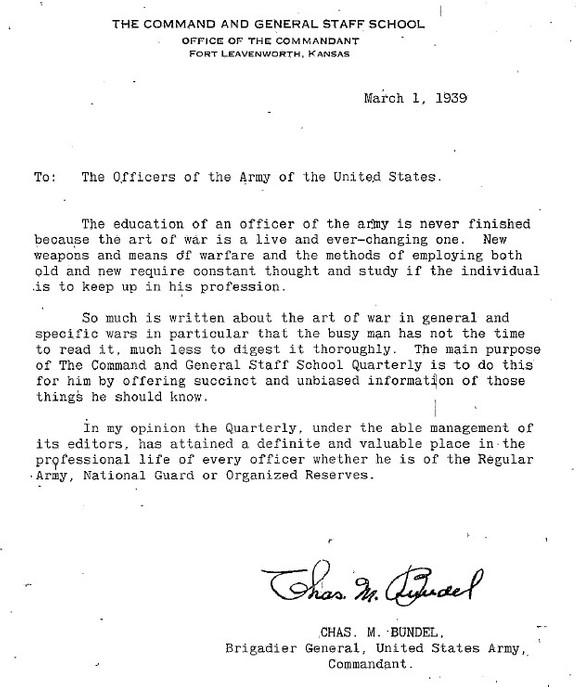
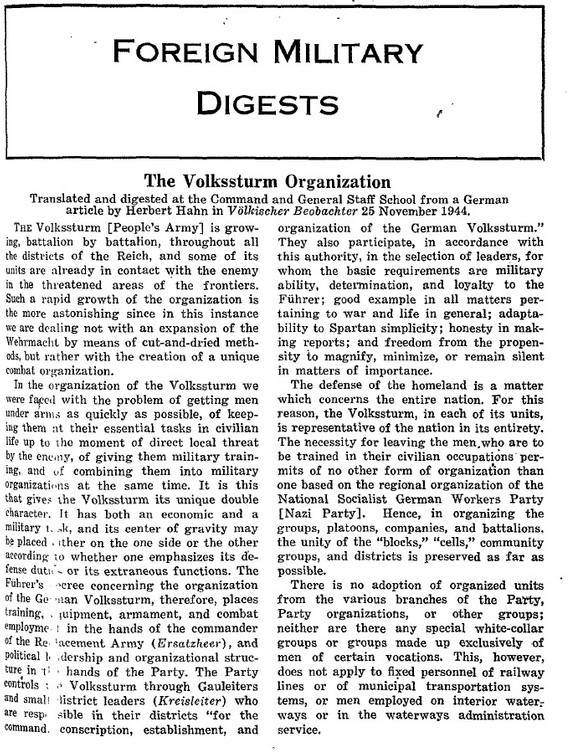
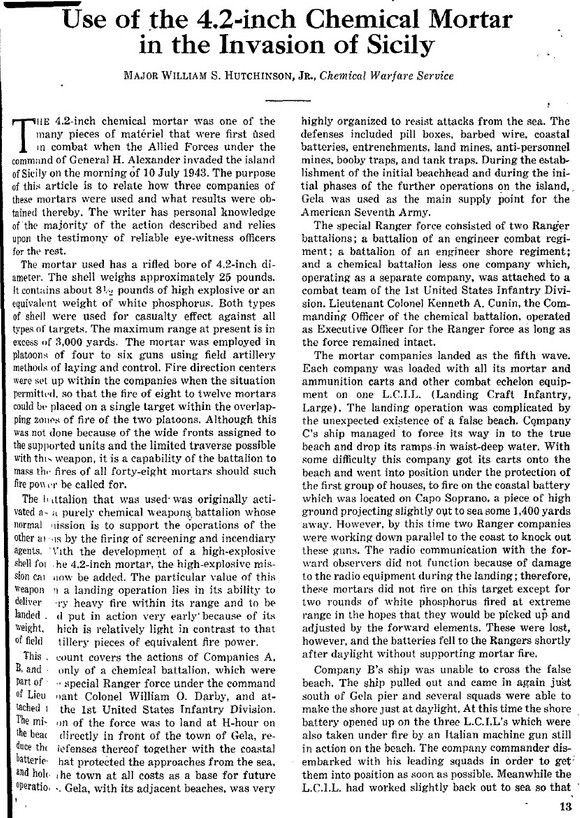
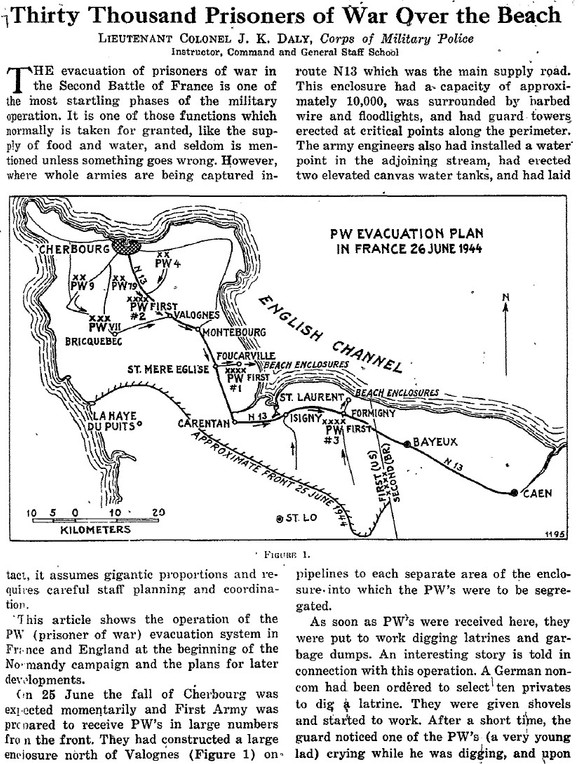
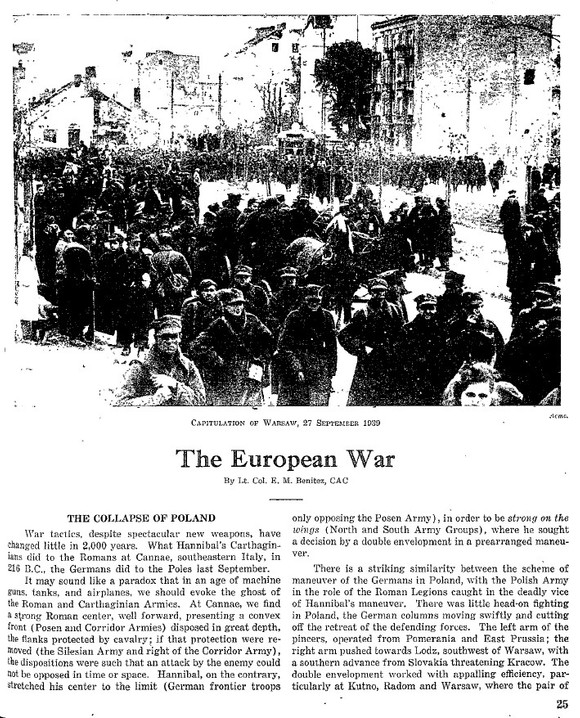
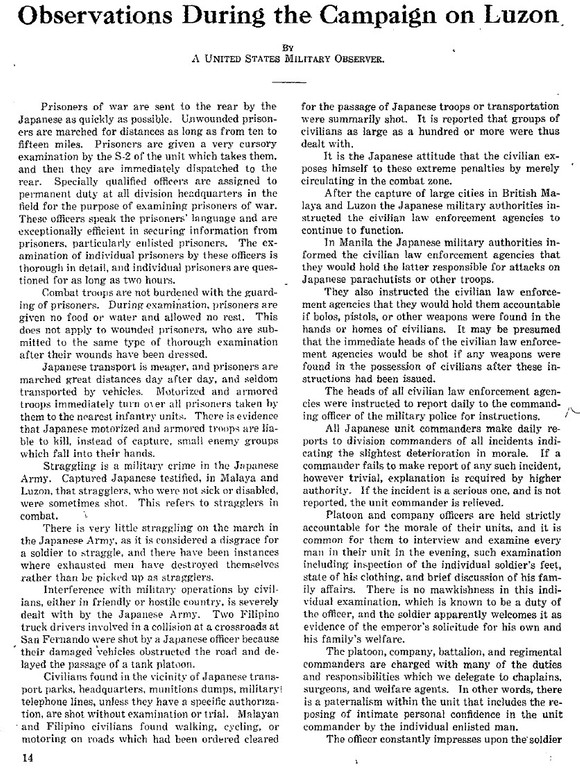

10,850 pages, 89 issues, of the journal Military Review dating from March 1938 to December 1948, published by The Command and General Staff School at Fort Leavenworth, Kansas.
The United States Army Command and General Staff College (CGSC) at Fort Leavenworth, Kansas is a graduate school for United States military officers. It was founded in 1881 by General William Tecumseh Sherman as the School of Application for Infantry and Cavalry. The school published its first issue of "Military Review" in 1922. In 1938, "Military Review" was known as the "Command and General Staff School Quarterly Review of Military Literature." In April 1943, it began to be published monthly, under the more informal heading "Military Review." The stated goal of this professional military journal was to study the concepts, doctrine and principles of warfare in an open atmosphere.
The issues before, during, and after World War II provide a unique look at American military thought and trends. During the war, Military Review became an up-to-date professional military journal filled with information, thought, and doctrine including translations and digests of important foreign military literature. It even included translations of German military journal articles produced during the war.
Before the war, the Military Review gave much attention to military theory and military tactics and the employment of military equipment in combat during previous European wars. World War II created a change of view for the journal. No longer did it seem concerned about 19th century horse mounted cavalry charges. It was now part of the war effort at hand. Military Review articles after the United States had direct involvement in World War II focused more on tactical employment of military forces based on current operations in Europe, the Pacific, and Africa. The majority of its content was contributed by American officers with recent combat experience. They produced articles with titles such as "Capture of an Enemy Supporting Point" (April 1943), "Reinforcing Artillery Employed in Mass" (June 1943), "Gasoline Supply in the Combat Zone" (October 1943), and "Armored Division in Offensive Action" (March 1941).
The need and supply of war information saw Military Review advance from a quarterly to a monthly publication in April 1943. As the war progressed Military Review sought more content from foreign military journals. This allowed it to draw from the experiences of America's allies and enemy's alike.
After two years of American participation in warfare, the mission of the journal was intensely focused on the relaying of knowledge regarding current strategic, tactical and logistical operations. This is demonstrated by the articles appearing in the January 1944 issue. The articles appearing in that issue had the titles:
As the war progress
The strategy of the 1943 invasion of Italy. COL Conrad H. Lanza.
Calculation and risk in the pursuit. MAJ B. Korol, Soviet Army.
The reconditioning program in Army Service Forces hospitals. BG Charles C. Hillman, US Army.
IV Fighter Command Army Air Forces (Sons of the Falcon). BG Russell E. Randall, IV Fighter Command.
An amphibious com Z. LT COL Raymond O. Ford, Ordinance Department.
Tutorial technique comes to Leavenworth. MAJ Lawrence L. Jarvie, Adjutant General's Department.
Introduction to a task force. LT COL Jay C. Whitehair, Cavalry.
G-1's "sixty-four dollar question". LT COL Louis Duenweg, Adjutant General's Department.
Blitzkrieg 1944. MAJ F. O. Miksche.
Campaigning in the jungle. LT COL Byron L. Paige, General Staff Corps.
British and U.S. staffs: a comparison. LT COL Frank S. Henry, Cavalry.
Food for thought. LT COL W. H. Van Dine, Quartermaster Corps.
Defense against an airborne attack. CAPT Earl Bishop, Infantry.
Reorganization for the Armored Division. LT COL J. M. Pittman, Infantry.
"We need more and better G/A-1's". COL Henry J. Schroeder, Signal Corps.
The Royal Air Force. WNG COMM M. T. Judd, Royal Air Force.
AAA in a landing operation. LT COL H. C. Dozer, Jr., Coast Artillery Corps.
Use your psychiatrist. CAPT Nathan Blackman, Medical Corps.
Barrier construction and anti-mechanized defense. LT COL Hubert E. Thorner, Infantry.
Military notes around the world.
Articles in this issue's foreign military digests section were:
Cooperation of cavalry with tanks.
The struggle for the Aegean.
Aircraft adjustment of artillery fire.
Role of reconnaissance in determining location of limiting points and flanks.
German emergency bridges.
Use of tanks in battle for mountain valleys.
Airborne forces.
Control of troops in battle.
An example of correct use of ground by tanks.
The work of the German Women's Labor Service.
Self-propelled artillery in offensive combat.
Combat formation of an antiaircraft regiment while protecting troops.
Utilization of ground in a tank battle.
Problems of mountain warfare.
Cooperation of various arms in development of attack.
Joint action of motorized infantry and tanks.
Battle for a hill.
Employment of assault guns on the Easter Front.
Place the tank unit commander in combat.
Aerial operations against enemy rail transport.
Battle of a ski battalion.
Air power at Salerno.
After the war ended, Military Review was able to draw, distill and distribute knowledge from the many battle experiences of World War II for decades into the future.







1 file (678.2MB)



